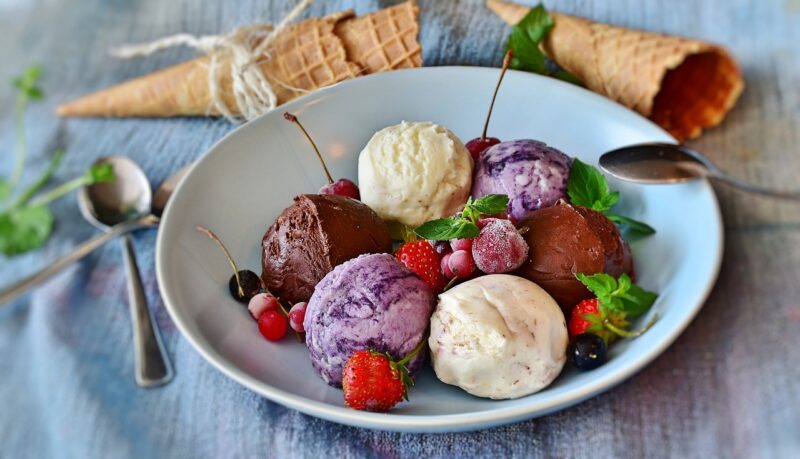How Ice Cream Became a Symbol of Celebration in Cultures Worldwide
November 16, 2024

Ice cream is universally loved; its appeal transcends boundaries, both cultural and geographic. What began as a luxurious treat for the elite has evolved into a beloved dessert enjoyed by people from all walks of life. This article delves into how ice cream became an emblem of celebration across various cultures worldwide, exploring its history, significance, and the myriad ways it’s enjoyed during festive occasions.
1. A Brief History of Ice Cream
Ice cream’s journey began thousands of years ago. Ancient civilizations, including the Greeks and Romans, consumed a chilled mix of snow and honey, often flavored with fruits or nuts. However, the modern form of ice cream that we know today began to take shape during the 16th century in Europe.
The first recorded recipe for ice cream appeared in a 1718 manuscript by Sir Hans Sloane, a British botanist. He noted the addition of cream to the frozen mixture, significantly changing the texture and making it richer. In the 18th century, ice cream became a favorite of the aristocracy, especially in France, where it gained immense popularity.
By the 19th century, with the invention of the hand-cranked ice cream maker, the production of this treat became more accessible, allowing people beyond the royal courts to indulge in it.
2. Ice Cream as a Symbol of Celebration
From birthday parties to weddings, ice cream has found its place at numerous celebrations. Here’s how it became a symbol of joy across cultures:
- Birthday Celebrations: The traditional birthday cake is often accompanied by a scoop of ice cream. This combination reflects the joy and festivity of celebrating another year of life.
- Weddings: Many cultures incorporate ice cream into wedding festivities, either as part of the dessert table or as an elegant ice cream bar, allowing guests to customize their flavors and toppings.
- Holidays: Ice cream is a common treat during various holidays. For instance, in the United States, ice cream is often served at Independence Day gatherings, while in Italy, gelato is enjoyed during summer festivals.
- Cultural Festivals: Many cultures have specific festivals where ice cream takes center stage. For example, in Japan, the annual Japan Ice Cream Festival celebrates the love of this dessert, showcasing innovative flavors and unique presentations.
These events highlight the social and communal aspects of enjoying ice cream, as it’s often shared among friends and family, making it an integral part of celebrations.
3. Global Variations of Ice Cream
Different cultures put their unique spin on ice cream, utilizing local ingredients and flavors. Below are some notable variations:
- Gelato (Italy): Denser and creamier than traditional ice cream, gelato is made with less air and fat, offering a more intense flavor experience. It’s often enjoyed during warm summer nights and at family gatherings.
- Mochi Ice Cream (Japan): A delightful treat where ice cream is wrapped in sweet rice dough, mochi ice cream is popular at festivals and family celebrations, combining the chewy texture of mochi with creamy ice cream.
- Paletas (Mexico): These refreshing ice pops come in a variety of flavors, often made with fruits or milk. Paletas are commonly enjoyed during summer holidays and festivals, symbolizing communal enjoyment.
- Scoops (India): Known as kulfi, this traditional Indian ice cream is rich, creamy, and often flavored with cardamom, saffron, or pistachios. Kulfi is a staple at weddings and large family gatherings.
These regional variations not only showcase the cultural significance of ice cream but also demonstrate how it is embraced and celebrated differently worldwide.
4. The Science of Happiness: Why Ice Cream Makes Us Celebrate
Ice cream is not just a delicious treat; it also makes us feel good. Scientific studies have explored the psychological effects of ice cream and other comfort foods, linking them to feelings of happiness and nostalgia. Here’s how:
- Comfort Food: Ice cream is often classified as comfort food due to its rich flavor and creamy texture, making it a go-to treat during celebrations.
- Memories and Nostalgia: Ice cream often evokes childhood memories of family gatherings or celebratory moments, enhancing its association with happiness and joy.
- Brain Chemistry: Foods high in sugar and fat trigger the release of endorphins and serotonin, hormones associated with pleasure and happiness, making ice cream an emotional experience.
The combination of sensory enjoyment and emotional connections reinforces why ice cream is a timeless symbol of celebration.
5. Ice Cream’s Role in Modern Celebrations
In the contemporary world, ice cream continues to play a central role in celebrations. Here are a few emerging trends in how ice cream is integrated into modern experiences:
- Social Media Moments: The visually appealing nature of ice cream lends itself perfectly to social media sharing, making it a popular choice for influencers showcasing party themes and gatherings.
- Customization: Ice cream trucks and parlors are often setting up stations where guests can create their own unique sundaes, fostering a sense of creativity and personalization during events.
- Health-Conscious Options: With the rise in health-conscious consumers, many ice cream brands are offering vegan, keto, and low-sugar options to accommodate diverse dietary needs while maintaining celebratory feelings.
These trends reflect the ongoing relevance of ice cream as a cultural symbol of celebration, evolving with societal values while retaining its core essence of joy and togetherness.
Conclusion
Ice cream’s transformation from an exclusive dessert for the elite to a universal symbol of celebration is a testament to its meaning in human connection. Whether served at birthdays, weddings, or local festivals, ice cream holds a special place in cultures worldwide, resonating with moments of joy, togetherness, and shared experiences. The global love for this sweet treat reflects how food, in its simplest forms, fosters happiness and celebration wherever it’s enjoyed.
As we continue to innovate and experiment with flavors and presentation, ice cream will undoubtedly remain an enduring symbol of joy for generations to come.








